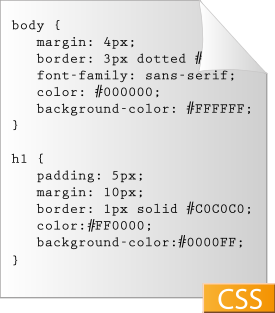 Image via Wikipedia
Image via Wikipedia
The early web was terrible at it, because it was a medium built for documents of information, not 'experiences'. We've had 15 years of adding technologies to change that, and 15 years of browsers all doing the technologies their own way, and the result is that making these experiences is like herding cats: it actually can be done, but you'd better have a good reason for it. It's funny how you can easily lose 3 days in meetings with a major enterprise discussing the Return on Investment [ROI] of hiring an intern to write a company blog and make customers feel listened to, while nobody seems to tally anymore whether it makes any sense to send money to an army of CSS coders and visual designers to make sure the logo floats on the left in every browser exactly the right amount of pixels as specified in the brand book made 3 years ago by some consulting company three countries away. (I probably shouldn't question it either: it keeps me partially fed.)
Still, I recently noticed something about my GMail window: like Craigslist, it is actually quite ugly. There's no grid. Things don't line up. If the Golden Ratio is being used anywhere, I am not seeing it. The buttons are all kinds of sizes. It still succeeds because it is so stripped down the imbalances aren't offensive, and it does what it has to do perfectly. Same with Craigslist: no visual designer is using words like 'integrity of the design' to tell us why those columns have to be just so but you can get around great on it. The former head designer of Google may have quit because everything was so 'data' driven instead of by 'aesthetics' or 'soul' but that doesn't seems to have stood in the way of attracting users by making the site really simple and deliver the best search results.
I opened Amazon and Barnes & Noble side by side and looked at them. B&N has all the gradients, the stripey background wallpaper, the feel of careful placement of elements, Amazon is still its fruit salad mess of saturated orange and blue high-contrasted against white. And, highly personally and subjective, I realized I put less trust in B&N's site. It's too produced, too corporate, to designed to be soothing and friendly, but these days a corporation with a smile scares me because I know that corporations in general only smile when they take my money. I go to a book website to buy a book, not to be told I should feel soothed for being on that website. Things got better once I clicked on an item, at least the item was on an item page, not a 'quiet oasis of media browsing evoking old world charm'.
Ok, here's my point: I think every adult in the capitalist world -- hell, every human from the age of 5 -- must have a developed sense of skepticism towards large corporations to be considered functional. We realize we get shafted by corporations the day it turns out a shrink-wrapped action figure is not hours of fun like promised, especially without the accessories that are sold separately, and life dealing with them barely gets any better after that. Newspapers get it wrong. The glossier the magazine the more it hems and haws about whether the products from their advertisers actually work.
So when a website goes balls out to look like a glossy -- fonts, arrangements, meticulous full bleed backgrounds, purpose-shot imagery with the right models, the whole thing screaming professional and brand and designed -- it may not envelope the user in a sense of familiarity and love. It may just arouse skepticism (after or during the irritation of trying to find the 'Skip Flash' button or the volume icon). It may instead raise the shields of skepticism that we all need to even survive the bullshit thrown at us in even a simple department store.
I think you actually can go too far in making a website beautiful and brand-perfect. I think beautiful gorgeous experiences from large brands evoke skepticism instead of lust, especially if the product or service it is selling is actually not that special. It ends up feeling like a cover-up. And also then, the websites that are most popular, facebook, twitter, myspace, are very careful about giving great functionality while not looking like a juggernaut corporation with an army of abused web-monkeys being commandeered by brand managers (even if they are).
Now, this isn't a very well worked-out framework I have here for evaluating trust vs design, just a thought. But I think I need to explore it further.
